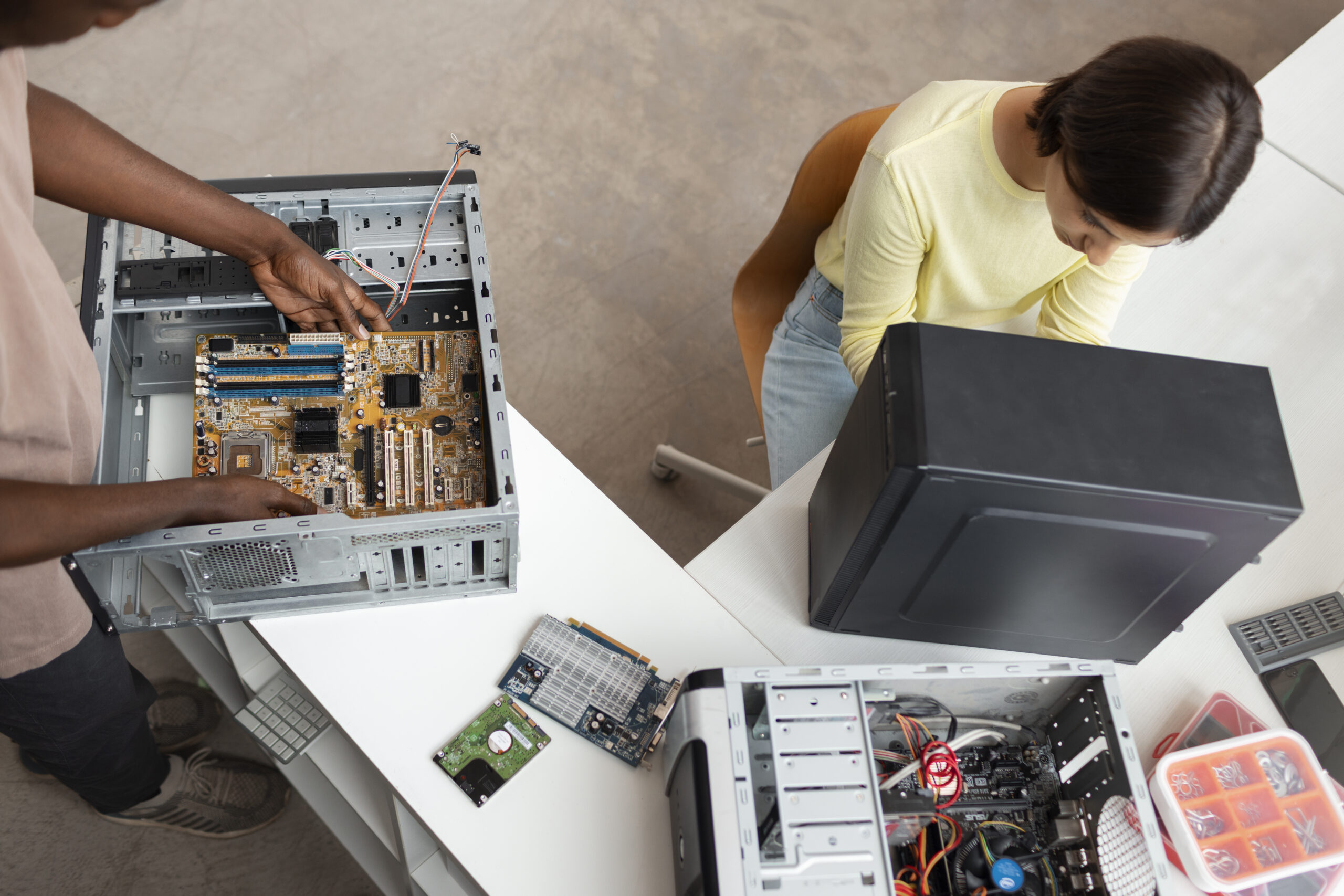Building a mini PC in 2025 is one of the most exciting projects for tech enthusiasts, gamers, and professionals who want performance in a compact design. Unlike traditional desktop towers, mini PCs offer the power of a full-sized computer but in a much smaller footprint. Whether you are looking for a gaming rig, a media center, or a workstation, a carefully planned mini PC build can deliver exceptional results while saving space on your desk.
In this article, we will cover everything you need to know about mini PC builds, including why they are popular, what components are needed, best builds for 2025, and tips to optimize performance.
Why Build a Mini PC?
Mini PCs are becoming more popular each year because of their space-saving design, stylish looks, and efficiency. Unlike bulky desktop towers, mini PCs can fit into almost any environment, from a small home office to a living room entertainment setup.
Here are the main reasons to consider a mini PC build:
- Compact Size: Perfect for small apartments, minimal desk setups, or travel.
- High Performance: With the right components, they can rival full ATX desktops.
- Versatility: Suitable for gaming, streaming, video editing, and office work.
- Portability: Easy to move or carry compared to a full tower.
- Modern Aesthetic: Sleek cases make them a stylish part of any setup.
For gamers, content creators, or professionals, mini PCs are not just small—they are powerful machines packed into tiny cases.
Choosing the Right Form Factor
When building a mini PC, the form factor is critical. The form factor determines the motherboard size, case type, and expansion options.
- Mini-ITX: The most common choice for mini PCs. A 17×17 cm motherboard that supports high-end CPUs and GPUs.
- Micro-ATX: Slightly bigger but offers more expansion slots. Still compact compared to full ATX.
- Intel NUC and Barebone PCs: Prebuilt small systems where you add storage and RAM. Good for beginners.
For most custom builders, Mini-ITX strikes the right balance between size, power, and flexibility.
Essential Components for a Mini PC Build
Just like a traditional PC, a mini PC requires the same core components, but in smaller, more efficient forms.
1. Motherboard
Mini-ITX motherboards are designed to save space but still offer features like PCIe slots, Wi-Fi, and USB-C. Options include:
- AMD B550 / X670 Mini-ITX boards for Ryzen CPUs.
- Intel Z790 / B760 Mini-ITX boards for 12th to 14th Gen Intel CPUs.
2. CPU (Processor)
Your choice depends on the purpose of your build:
- Gaming: AMD Ryzen 7 7800X3D or Intel i5-14600K.
- Everyday Use / Office: Ryzen 5 5600G or Intel i5-13400.
- Low-power server: Intel N305 or Ryzen 8600G APU.
3. GPU (Graphics Card)
Since space is limited, choose a compact GPU:
- NVIDIA RTX 4060 Ti Mini or RTX 4070 Mini.
- AMD RX 7600 or RX 7700 XT compact editions.
If you only need light gaming or media, consider an APU with integrated graphics.
4. RAM
- 16GB DDR5 for general use.
- 32GB DDR5 for gaming, editing, and multitasking.
5. Storage
- NVMe M.2 SSDs are ideal since they require no cables and are very fast.
- Recommended: Samsung 990 Pro or WD Black SN850X.
6. Power Supply (PSU)
- Choose an SFX or SFX-L PSU for compatibility with small cases.
- 550W to 750W is enough for most builds.
7. Case
The case is what makes a mini PC special. Popular cases in 2025 include:
- Cooler Master NR200P.
- NZXT H1 V2.
- Fractal Design Terra.
- Louqe Ghost S1.
8. Cooling
Since airflow is limited, cooling is very important:
- Low-profile air coolers like Noctua NH-L9i.
- Small liquid AIO coolers if the case allows.
Example Mini PC Build (2025)
Here’s an example of a balanced gaming mini PC build for 2025:
| Component | Example Model | Notes |
|---|---|---|
| Case | Cooler Master NR200P | Compact with good airflow |
| Motherboard | ASUS ROG Strix B650-I | For AMD CPUs |
| CPU | AMD Ryzen 7 7800X3D | Gaming powerhouse |
| Cooler | Noctua NH-L12 | Low-profile cooling |
| GPU | NVIDIA RTX 4070 Super Mini | Great for 1440p/4K |
| RAM | 32GB DDR5-6000 | Fast and reliable |
| Storage | 2TB Samsung 990 Pro NVMe | Ultra-fast load times |
| PSU | Corsair SF750 (SFX) | Compact and efficient |
This build delivers amazing gaming performance in a case small enough to fit on a desk or even in a backpack.
Pros and Cons of a Mini PC Build
✅ Pros
- Saves space while delivering high performance.
- Stylish and modern look.
- Portable compared to traditional towers.
- Energy-efficient with newer CPUs and GPUs.
❌ Cons
- Limited upgrade options.
- Cooling can be more difficult.
- Some parts (Mini-ITX boards, SFX PSUs) are more expensive.
Tips for Building a Mini PC
- Plan ahead: Check case dimensions before buying parts.
- Choose airflow-friendly cases to avoid overheating.
- Cable management is critical in small spaces.
- Consider future upgrades when selecting CPU, GPU, and storage.
- Use modular PSUs to reduce cable clutter.
Final Thoughts
A mini PC build in 2025 is the perfect combination of power, portability, and style. With modern hardware, you no longer need a bulky tower to enjoy high-end gaming, video editing, or office productivity. By carefully choosing the right components and case, you can build a machine that is compact yet powerful enough to handle everything you need.
Whether you want a portable gaming rig, a home theater PC, or a minimalist workstation, a custom mini PC build is an excellent choice that blends performance with design.




